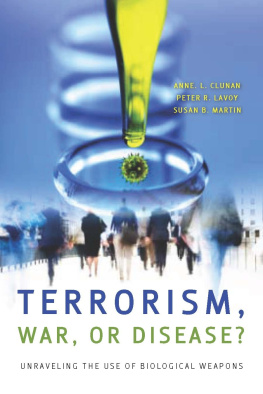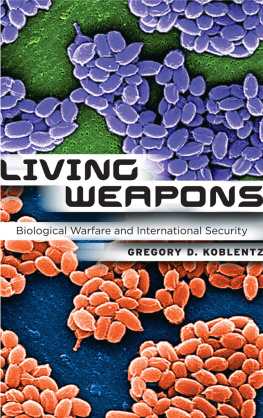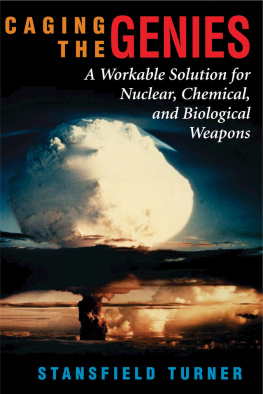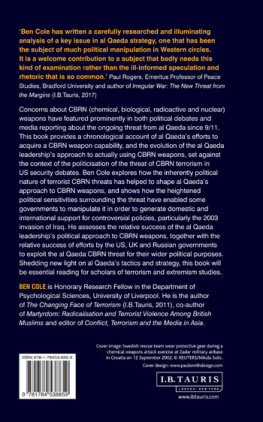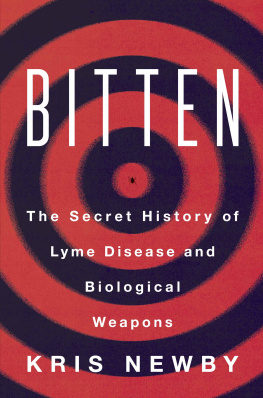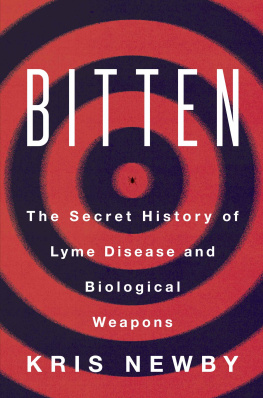Anne L. Clunan - Terrorism, War, or Disease?: Unraveling the Use of Biological Weapons
Here you can read online Anne L. Clunan - Terrorism, War, or Disease?: Unraveling the Use of Biological Weapons full text of the book (entire story) in english for free. Download pdf and epub, get meaning, cover and reviews about this ebook. year: 2008, publisher: Stanford Security Studies, genre: Politics. Description of the work, (preface) as well as reviews are available. Best literature library LitArk.com created for fans of good reading and offers a wide selection of genres:
Romance novel
Science fiction
Adventure
Detective
Science
History
Home and family
Prose
Art
Politics
Computer
Non-fiction
Religion
Business
Children
Humor
Choose a favorite category and find really read worthwhile books. Enjoy immersion in the world of imagination, feel the emotions of the characters or learn something new for yourself, make an fascinating discovery.
- Book:Terrorism, War, or Disease?: Unraveling the Use of Biological Weapons
- Author:
- Publisher:Stanford Security Studies
- Genre:
- Year:2008
- Rating:4 / 5
- Favourites:Add to favourites
- Your mark:
- 80
- 1
- 2
- 3
- 4
- 5
Terrorism, War, or Disease?: Unraveling the Use of Biological Weapons: summary, description and annotation
We offer to read an annotation, description, summary or preface (depends on what the author of the book "Terrorism, War, or Disease?: Unraveling the Use of Biological Weapons" wrote himself). If you haven't found the necessary information about the book — write in the comments, we will try to find it.
Anne L. Clunan: author's other books
Who wrote Terrorism, War, or Disease?: Unraveling the Use of Biological Weapons? Find out the surname, the name of the author of the book and a list of all author's works by series.
Terrorism, War, or Disease?: Unraveling the Use of Biological Weapons — read online for free the complete book (whole text) full work
Below is the text of the book, divided by pages. System saving the place of the last page read, allows you to conveniently read the book "Terrorism, War, or Disease?: Unraveling the Use of Biological Weapons" online for free, without having to search again every time where you left off. Put a bookmark, and you can go to the page where you finished reading at any time.
Font size:
Interval:
Bookmark:
Chapter 4 2008 by Matthew S. Meselson and Julian Perry Robinson;
Chapter 8 2008 by Jeanne Guillemin
No part of this book maybe reproduced or transmitted in any form or by any means, electronic or mechanical, including photocopying and recording, or in any information storage or retrieval system without the prior written permission of Stanford University Press.
Library of Congress Cataloging-in-Publication Data
Terrorism, war, or disease? : unraveling the use of biological weapons / edited by Anne L. Clunan, Peter R. Lavoy, Susan B. Martin. p. cm.
358.3882dc22
Printed in the United States of America on acid-free, archival-quality paper
Typeset at Stanford University Press in 10/14.5 Minion
Special discounts for bulk quantities of Stanford Security Series
are available to corporations, professional associations, and
other organizations. For details and discount information,
contact the special sales department of Stanford University Press.
Tel: (650) 736-1783, Fax: (650) 736-1784
LOUISA, NATHANIEL, and ZOE
May they never experience this threat
Font size:
Interval:
Bookmark:
Similar books «Terrorism, War, or Disease?: Unraveling the Use of Biological Weapons»
Look at similar books to Terrorism, War, or Disease?: Unraveling the Use of Biological Weapons. We have selected literature similar in name and meaning in the hope of providing readers with more options to find new, interesting, not yet read works.
Discussion, reviews of the book Terrorism, War, or Disease?: Unraveling the Use of Biological Weapons and just readers' own opinions. Leave your comments, write what you think about the work, its meaning or the main characters. Specify what exactly you liked and what you didn't like, and why you think so.

